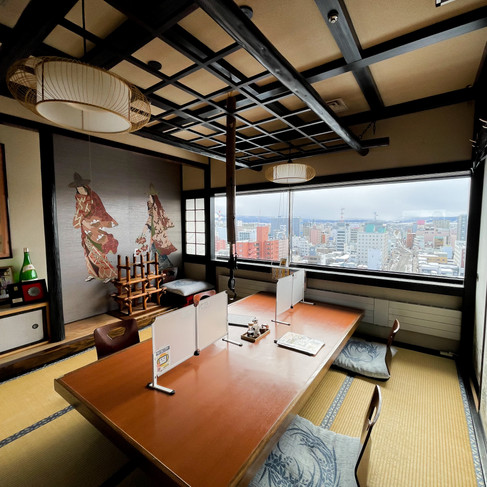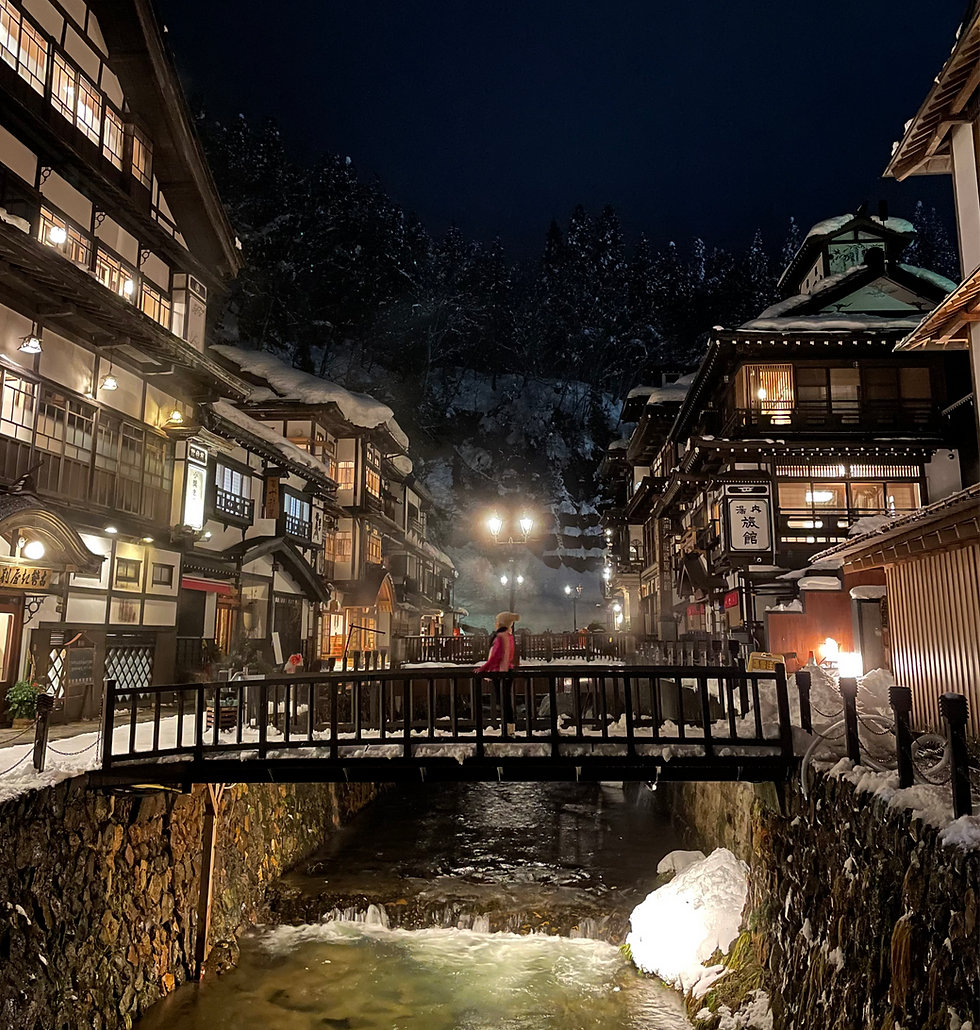A 7-Day TOUHOKU Adventure: Winter trip in Touhoku Aomori and Hirosaki
- MaiRie

- Jan 8, 2023
- 4 min read
Updated: Jan 27, 2024

During my visit to Touhoku last spring, I imagined its beautiful and breathtaking winter scenery, and it has been on my bucket list since. Touhoku is renowned for its mountains and lakes, and there are many natural onsens that you could visit during the winter season. On this trip, we visited the classic destinations aiming to hit five out of six prefectures in a week. This blog will be shared in five parts:
Discovering the Wintery Charm of Aomori
Where is Touhoku Region?
The Tohoku Region, also known as the Northeast Region, consists of six prefectures: Aomori, Akita, Iwate, Yamagata, Miyagi, and Fukushima. It took us two months to plan this trip, which included checking hotels and the roads to find the best options.
This trip involves starting our day early, before sunrise, and ending it before sunset. Since the daytime is shorter in winter, we made sure we're on the move during day time for our safety since Touhoku is primarily rural and many locations are remote. So, if you are traveling during the season, plan your activities during the day to take advantage of the daylight.
Discovering the Wintery Charm of Aomori
(Two days of exploring Aomori City and Hirosaki City)

Aomori is one of my favorite prefectures because of its rich culture, delicious apples, and friendly people. I wished my family were there to share the experience with me during my previous visit. This time, our itinerary includes revisiting some of the places I went last spring, to show my family around as we explore some notable places I've never been.
Getting there: Flying from Tokyo (Haneda) to Aomori

TOKYO <-> AOMORI
Coming from the chugoku region, our best access to Aomori was catching a flight from Haneda Airport. The flight took about 90 minutes, offering the stunning snowscapes of Touhoku.
If you're looking for a more affordable option, you can consider taking the night bus for about 11 hours bus ride to the north.
AOMORI AIRPROT <-> AOMORI CITY
Direct Bus: 37min to Aomori Station (¥860)
Taxi: 20min (¥3,000~)
What to eat: Aomori's delicacies
After a long journey, our first priority was to take a break. We decided to visit ASPAM (Aomori Prefecture Tourist Center), where we found a variety of local foods, souvenirs, and a stunning ocean view from the restaurants. We decided to check MICHINOKURYORI NISHIMURA - A restaurant that has been around for over 30 years, specializing in Michinoku cuisine, made with seasonal ingredients carefully selected by the chef every day from the market.
Aomori is famous for its apples and seafood, particularly sea scallops (hotate), which are highly valued for their quality and flavor across the country. Located in the heart of Mutsu Bay, Aomori is a rich source of shellfish and seaweed.

Another find located on the first floor is this Nebuta-shaped taiyaki. This is definitely a must, especially during the winter!
Where to stay: Accessible hotel from Hirosaki Station
Finding a place to stay in Aomori is difficult so I recommend staying in Hirosaki if you pass by. If you're looking for a hotel that's conveniently located near the station, Art Hotel Hirosaki City is your best bet. It's just a few minutes from Hirosaki Station and easily accessible from the bus station. If you're driving, plenty of parking spaces are nearby where you can safely leave your car.
The view from our foggy room window
Although my visit to Aomori was brief, it was nice to revisit some places and see them during winter. In my next post, I cross to Akita Prefecture to unwind in one of its famous onsen, Tsuru no Yu and enjoy some of its snowscapes in the morning before heading to Yamagata for Ginzan Onsen.
Explore: 5-must visits in Aomori
Aomori is renowned for its vibrant Nebuta Festival, which is one of Japan's largest festivals, held during the summer season. During winter, you can still experience the beauty of Nebuta floats by visiting the Nebuta Museum WA RASSE (Aomori City) and Neputa Mura ( Hirosaki City). These museums are fascinating as they offer a glimpse into the intricate craftsmanship of the floats, and their impact on the spectators is truly unforgettable. I always enjoy revisiting these museums and admiring the beautiful floats when I'm in Aomori. I can't get enough of them! Of course, we also visited some significant locations to enjoy the snowy scenery.
Seiryu-ji, Aomori City
The temple grounds are adorned with stunning structures, one of which is a five-story pagoda constructed in 1996 using natural Aomori cypress wood. It stands as the fourth tallest pagoda in Japan. This temple is also home to the tallest seated bronze statue of Buddha in Japan, known as 'Great Showa Buddha', which is even taller than the famous Daibutsu of Nara.
Saishoin was first built in 1532 and was later relocated to its current location in 1611 after the completion of Hirosaki Castle. The Five-Storied Pagoda, which was built during the Edo period without a single nail, is considered the most beautiful five-storied pagoda in Tohoku, making it a true hidden gem in Hirosaki.
Starbucks Hirosaki Koen-mae
As a Starbucks enthusiast, I cannot miss the chance to visit this particular Starbucks store, even though I went there last spring. It's a beautiful place to go, even in winter, with a stunning view of the snow from the window. I highly recommend visiting if you're around for the Hirosaki Castle and Neputa Mura.
Other places to visit: Places to explore in Hirosaki City
Neputa Mura
Hirosaki Castle
I shared my experience in these places during my last Tohoku trip. Check it out if you want to know more.



































Comments